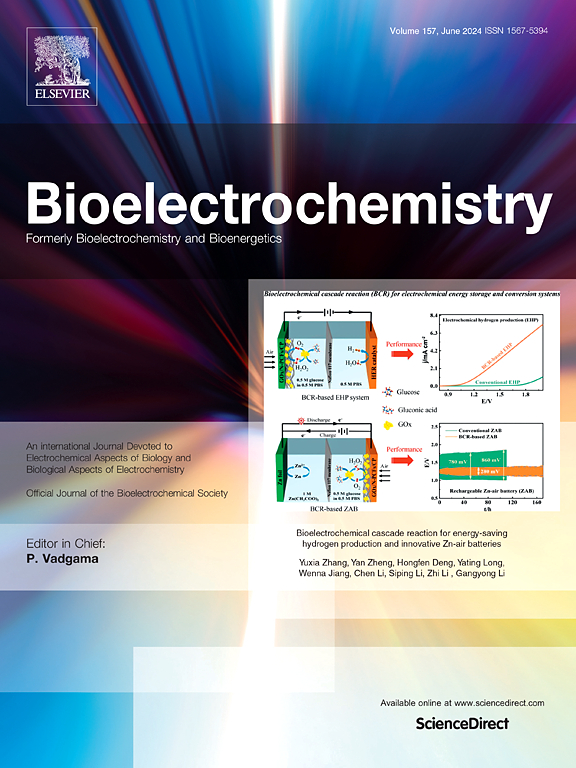利用深度学习和实时线索传递追踪成对饲养的小鼠的条理性恐惧
IF 3.6
2区 医学
Q1 NEUROSCIENCES
引用次数: 0
摘要
创伤后应激障碍(PTSD)是一种复杂而普遍的神经精神疾病,是由于暴露于创伤性事件而引起的。创伤后应激障碍的常见诊断标准包括在安全或熟悉的环境中对创伤相关感官线索的生理反应增强。理解复杂的PTSD标准需要新的临床前范例和技术,将感觉生理学(如听觉、视觉、嗅觉)与行为结合起来。在这里,我们提出了一个新的基于巴甫洛夫的范式,使用开源软件和基于深度学习的姿势估计来研究反复条件刺激(CS)对家庭笼子中成对饲养的小鼠恐惧行为的影响。同时使用深度学习模型进行家庭笼子视频记录和cs诱发的冻结行为分析,并考虑光-暗昼夜周期。在2周范式的中期,恐惧条件下的二联体小鼠表现出高cs诱发的冻结,并有证据表明消退学习(以低冻结为特征)。与雄性相比,雌性表现出较少的cs诱发的家中笼子冻结,在光照(低冻结)和黑暗(高冻结)期间存在昼夜节律差异。两周后,与对照组相比,恐惧条件小鼠表现出更高的情境依赖性冻结,而雄性而非雌性表现出更高的惊吓反应。综上所述,这些结果展示了一种新的软件应用程序,用于在动物行为学相关的环境中检查小鼠二联体的条件防御和恐惧行为。未来的应用可以用于更综合的分析和理解神经回路和增强的感觉威胁反应,潜在地提高对创伤后应激障碍的理解和治疗。本文章由计算机程序翻译,如有差异,请以英文原文为准。
Tracking conditioned fear in pair-housed mice using deep learning and real-time cue delivery
Post-traumatic stress disorder (PTSD) is a complex and prevalent neuropsychiatric condition that arises in response to exposure to a traumatic event. A common diagnostic criterion for PTSD includes heightened physiological reactivity to trauma-related sensory cues, in safe or familiar environments. Understanding complex PTSD criteria requires new pre-clinical paradigms and technologies that integrate sensory physiology (e.g., auditory, visual, olfactory) with behavior. Here we present a novel Pavlovian-based paradigm using an open-source software plus deep learning-based pose estimation to investigate the effects of a recurrent conditioned stimulus (CS) on fear behaviors in pair-housed mice within the home cage. Simultaneous home cage video recording and analysis of CS-evoked freezing behaviors were performed using a deep learning model, with consideration for light-dark circadian cycles. Fear-conditioned dyad mice exhibited high CS-evoked freezing, with evidence of extinction learning (characterized by low freezing) during the mid-phase of the 2-week paradigm. Females exhibited reduced CS-evoked home cage freezing compared to males with circadian differences between the light (low freezing) and dark (high freezing) periods. Following the 2-week paradigm, fear-conditioned mice, compared to controls, exhibited heightened context-dependent freezing, while males but not females showed heightened startle reactivity. Taken together, these results demonstrate a novel software application for examining conditioned defensive and fear behaviors over time in mouse dyads within an ethologically relevant environment. Future applications could be used for more integrative analysis and understanding of neural circuits and heightened sensory threat reactivity, potentially improving the understanding and treatment of PTSD.
求助全文
通过发布文献求助,成功后即可免费获取论文全文。
去求助
来源期刊

Neurobiology of Stress
Biochemistry, Genetics and Molecular Biology-Biochemistry
CiteScore
9.40
自引率
4.00%
发文量
74
审稿时长
48 days
期刊介绍:
Neurobiology of Stress is a multidisciplinary journal for the publication of original research and review articles on basic, translational and clinical research into stress and related disorders. It will focus on the impact of stress on the brain from cellular to behavioral functions and stress-related neuropsychiatric disorders (such as depression, trauma and anxiety). The translation of basic research findings into real-world applications will be a key aim of the journal.
Basic, translational and clinical research on the following topics as they relate to stress will be covered:
Molecular substrates and cell signaling,
Genetics and epigenetics,
Stress circuitry,
Structural and physiological plasticity,
Developmental Aspects,
Laboratory models of stress,
Neuroinflammation and pathology,
Memory and Cognition,
Motivational Processes,
Fear and Anxiety,
Stress-related neuropsychiatric disorders (including depression, PTSD, substance abuse),
Neuropsychopharmacology.
 求助内容:
求助内容: 应助结果提醒方式:
应助结果提醒方式:


